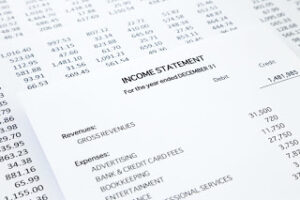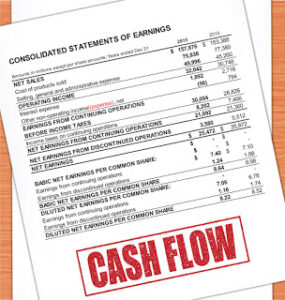DETAILED LOOK AT FOUR BASIC FINANCIAL STATEMENTS
Detailed Look At Four Basic Financial Statements
Accounting can be complicated but when you break it down into different parts it’s far more manageable. The four main financial statements include: balance sheets, income statements, cash flow statements and statements of shareholders’ equity.
These four financial statements are considered common accounting principles as outlined by GAAP. Businesses should keep careful track of all four of these statements. Especially if your company has shareholders, in which case you will need to produce these statements for them to review on a regular basis.
DGK offers hands on accounting services for businesses. Let us take care of the technical accounting details so that you can focus on running your business.
1. Balance Sheet
The balance sheet is a basic financial statement that provides valuable up to date insights on the financial positioning of your business. The balance sheet is used to report entity resources as well as evaluate long-term obligations and goals. Balance sheets vary from year to year and offer a great comparison tool.
The balance sheet is based upon the following equation:
Liabilities + Equity = Assets
There are two different types of assets, current and fixed. Current assets are easy to convert into cash and include things like notes receivable, inventory, marketable securities and prepaid assets. Fixed assets are marked as what you originally paid for them and may be worth a lot more when you sell them. Fixed assets include things like land, buildings, and equipment.
Liabilities are assets owed to creditors broken down into current and long-term classifications. Short-term or current liabilities include things like accounts payable, wages payable, and taxes payable. Long-term liabilities classify things like mortgages and bonds.
Equity defines owners and stockholders’ equity in a business. Equity owners only have a right to payment after creditors are paid. If the business were to close down for any reason, creditors are paid off before owners or shareholders receive anything.
2. Income Statement
Your income statement defines how much money you made in a certain period of time, for example one year. A simple equation used to define income statements:
Revenue – Expenses = Net Income
All expenses accumulated to produce a sale must be subtracted from revenue in order to know if your business is making money. In order to get a more detailed picture you also need to take into account any gains or losses that result from a good investment, a natural disaster or maybe even an unhappy client that refused to pay for services already provided.

3. Statement Of Owner’s Equity
Also known as Statement of Retained Earnings, this statement utilizes information produced by the Income Statement and in turn provides information to the Balance Sheet.
The basic equation for a sole proprietorship is:
Beginning Equity + Investments – Withdrawals + Income = Ending Equity
If you are creating a Statement of Owner’s Equity for a corporation the equation goes as follows:
Beginning Equity + Investments – Dividends Paid + Income = Ending Equity
Stockholder equity is calculated by:
Common Stock + Premium on Common Stock + Preferred Stock + Premium on Preferred Stock + Retained Earnings = Stockholders’ Equity
The premium on a stock is reflected by the actual price your company sold the stock for. Stockholders’ equity does not fluctuate with changing stock prices.
4. Cash Flow Statement

It’s very common for profitable companies to struggle keeping adequate funds in the bank. The Cash Flow Statement helps to evaluate what’s really going in terms of cash sources and uses, while providing a solid way to assess how well your company can pay its bills. The information that goes on the cash flow statement is originated from the beginning and ending balance sheets, as well as the income statement for the same period.
Cash Flow Statements reflect:
-Where cash is sourced
-How company cash is used
-Any fluctuations in cash balances
This form of analysis breaks cash sources and cash flow into three categories: Operating, Investing and Financing Activities. From there you can determine where to make cuts if necessary.
Let Us Take Care Of Your Small Business Accounting
Outsourcing accounting can be a valuable tool for small businesses. DGK can help your business save money, time and hassles with our thorough small business accounting services. Let us take over all of your accounting needs or offer advisory support.


